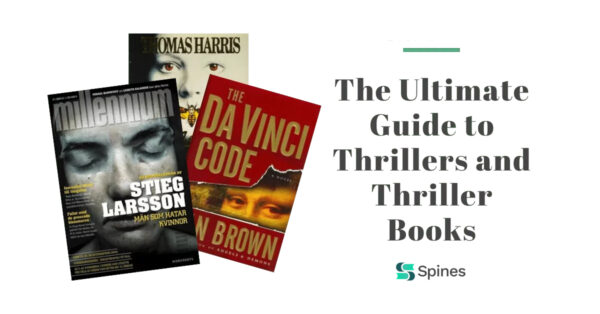Short stories might be small, but they can pack a big punch—like an espresso shot for your soul. If you’re a writer with a collection of beautifully written and complete stories (or a few scattered gems hiding in your drafts folder), you might be wondering how to self-publish them and make them stand out. After all, a short story collection needs more than just stories to succeed—it needs a thematic spine holding it together.
In this guide, we’ll take you step-by-step through the art and process of how to self-publish short story collections with thematic impact. Whether you’re drawn to the weird and strange, or you’re weaving poignant tales of hope and loss, your stories deserve to shine. So, sharpen your pen (or open your laptop), because it’s time to make your dream collection a reality.
Starting Strong: Building Your Thematic Framework
Every great collection begins with a unifying thread. Readers tend to gravitate toward collections that feel cohesive, where every story contributes to a larger concept. Think of Shirley Jackson’s hauntingly dark works or Raymond Carver’s emotionally resonant slices of life. Their stories linger because they explore themes like death, sadness, hope, or the strangeness of everyday life.
Step 1: Choose a Theme That Resonates With You: What do you want your collection to say? Is it about the bittersweet moments of youth, the weird twists of fate, or the inevitability of change? A clear theme not only gives your collection focus but also provides readers with a sense of emotional payoff.
Step 2: Curate Your Stories: Decide whether you’ll use your own short stories, collaborate with multiple authors, or mix and match. If you’re working solo, think about your strongest pieces—do they all align with your theme? Each short story should contribute to the overarching theme. For anthologies featuring more than one author, make sure the stories have a similar tone, even if they explore diverse writing styles or genres.
The theme will act as a bridge, connecting every story to create a unified reading experience. It’s what turns your collection from “just another book” into one of the best collections readers will keep coming back to.
Structuring the Collection: Ordering Stories with Purpose
A short story collection is like an album—you need a killer opening track, a strong middle, and a powerful closer. Here’s how to structure your collection to keep your readers hooked from the first page to the last.
Start with a Bang: The first story in your collection should grab the reader’s attention immediately. This is your chance to make a great first impression. Choose a story that sets the tone for the rest of the collection and introduces your theme.
Keep the Momentum: The middle stories should offer variety—alternate between different writing styles, characters, and moods to keep readers engaged. Balance the dark with the light, the poignant with the weird, and the sad with the hopeful. Include other stories that explore diverse themes to reflect the overall impact and mastery of storytelling present throughout the work.
End with Impact: The final story is your mic-drop moment. Leave your readers thinking about your collection long after they’ve finished it. Whether it’s a beautifully written tale of redemption or a gut-punch of an ending, make sure it ties back to your theme.
Crafting or Curating Stories: Writing and Editing for Impact
Let’s be honest—no matter how great your theme or structure is, your stories need to be polished to perfection. Whether you’re writing original pieces or curating stories from others, here’s how to ensure your collection is top-notch.
For Writers: If you’re the sole author, treat each story as its own masterpiece. In today’s world of short attention spans, focus on developing strong characters, vivid settings, and a compelling narrative. Make every word count—short stories thrive on economy. And don’t be afraid to experiment with styles or genres to add depth to your collection.
For Curators: Compiling a collection with multiple authors? Choose stories that complement each other. Curate tales that align with your theme but bring diverse perspectives, voices, and experiences. A mix of styles and tones can create a rich and layered reading experience.
Finally, invest in a professional editor. Even the best collections need a second set of eyes to catch inconsistencies, improve flow, and ensure the stories shine individually and as a whole.
Formatting and Design: Presentation Matters
You might have written (or curated) a fantastic collection, but readers judge books by their covers—and their interiors. Here’s how to create a visually appealing book that matches the quality of your writing.
Design a Stunning Cover
Your cover is the first thing readers will see, so it needs to be eye-catching and thematically relevant. Whether you’re going for dark and moody, bright and hopeful, or minimalist and strange, work with a professional designer to create something memorable.
Polish the Interior Layout
Formatting matters. Choose fonts, margins, and page layouts that are easy to read and visually pleasing. A consistent and clean design adds to the overall reading experience.
Add Illustrations (Optional)
Illustrations can bring your collection to life. Whether it’s a single sketch for each story or a beautifully drawn cover, visual elements can help reinforce your theme and captivate readers.
Self-Publishing Platforms: Where to Publish Your Collection
You’ve done the hard work—now it’s time to get your collection into the hands of readers. The self-publishing world offers several options to suit your goals and budget.
Top Platforms for Self-Publishing
- Amazon KDP: The go-to platform for self-published authors, offering global reach and easy-to-use tools.
- IngramSpark: Ideal if you want to distribute both print and ebook versions to bookstores and libraries.
- Spines Publishing Platform: Fast and most innovative way to publish your book. Offering global reach and ease of use.
Ebook vs Print
While ebooks dominate the self-publishing market, print editions can still attract readers who love the tactile experience of holding a book. Offering both formats is often the best approach.
Marketing Your Collection: Reaching Readers
Even the best short story collections won’t sell themselves. You’ll need to put some effort into marketing your book and connecting with your target audience.
Build Your Author Platform
Establish a presence on social media, create a professional author website, and start a newsletter to engage directly with readers. Share snippets of your stories or behind-the-scenes insights to build interest.
Target Niche Audiences
Promote your collection to readers who love your genre or theme. If your stories lean toward the dark and strange, reach out to fans of Shirley Jackson. If you’re exploring poignant slices of life, connect with readers who admire William Trevor or Raymond Carver. Encourage readers to explore all the books by these authors to gain a deeper understanding of their themes and writing styles.
Leverage Reviews and Word-of-Mouth
Encourage early readers to leave reviews on Amazon, Goodreads, and book blogs. Positive reviews and recommendations can dramatically boost your book’s visibility.
Self-Publish Short Story Collections: Bring Your Stories to Life with Spines
Self-publishing a short story collection might feel like assembling a jigsaw puzzle—it takes time, care, and creativity to make all the pieces fit together. But when you finally hold your beautifully written collection in your hands, the sense of accomplishment is unmatched.
At Spines, we understand that every writer’s journey is unique. Whether you need help designing your cover or formatting your book for publication, we’re here to support you. Let’s work together to bring your vision to life—and help your collection find its place in the world.
Ready to share your stories? Let Spines be your publishing partner. Visit Spines today to get started.









